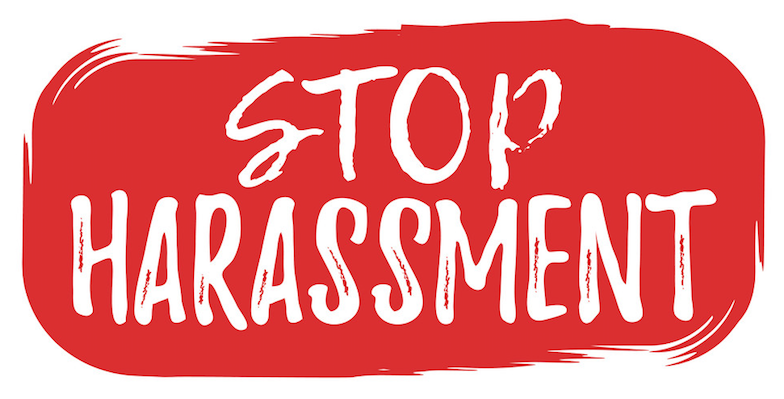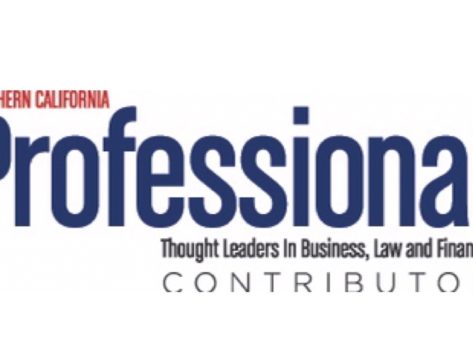FEHA—Free Everyone of Harassment Already
FEHA—Free Everyone of Harassment Already
Published in Bloomberg Law – Daily Labor Report
In California and nationwide, legislatures, companies, and courts are engaging in a growing mainstream push against workplace sexual harassment, attorney Karina Saranovic writes.
The California Fair Employment & Housing Act (FEHA) has proven a critical aid for injured plaintiffs both at work and home since its enactment. With its progressively expansive interpretation, FEHA has also become an effective tool for combating one of the most sensitive issues plaguing our modern times: sexual harassment.
And, if all moves forward smoothly, FEHA may very well prove the golden key to finally locking up the long overdue problems of harassment and discrimination in the workplace.
The Origins of FEHA
The fusion of the California Fair Employment Practices Act (FEPA) of 1959 and the Rumford Fair Housing Act of 1963 birthed FEHA in 1980.
Via Governor Jerry Brown’s Senate Bill 1038, the California Department of Fair Employment and Housing (DFEH) also became the designated enforcement agency for monitoring reported discrimination, harassment and retaliation under the Act.
FEHA “prohibits harassment based on a protected category against an employee, an applicant, an unpaid intern or volunteer, or a contractor.” This includes the protected category of sex.
Commonly at the forefront of minds when the word “sexual” pairs with harassment, sexual harassment includes the “unwanted sexual advances, or visual, verbal or physical conduct of a sexual nature” at a place of employment.
However, this category covers far more ground since it also encompasses sexual identity, sexual orientation, sexual expression and gender.
Sexual harassment at work can be manifested either “quid pro” or via a hostile work environment. A harassment quid pro involves a perpetrator’s expectation of sexual compliance in exchange for a work-related promotion. In the latter, a perpetrator’s conduct is so severe and pervasive that a reasonable person would find it intimidating and abusive.
FEHA may find its stride in this form of discrimination as proposed laws increasingly utilize the Act to spear through sexual harassment.
FEHA Spreading its Wings
Although FEHA has already proven an effective conduit for inking sexual harassment legislation over the years, 2018 may bear even more legislative fruit as a surge of sexual harassment-related bills jump through the requisite hoops.
First, in an aggressive effort to nix sexual harassment at its root, SB 1300 would impose liability upon an employer who fails to take reasonable steps to prevent sexual harassment even absent a showing of harassment and discrimination.
Next, SB 1038 and AB 3081 tackle the issue of retaliation. If SB 1038 passes, individual employees would risk personal liability for retaliation, shifting away from the earlier standard where individuals could only be held personally liable for the harassment itself.
Proposed bill AB 3081 would create a rebuttable presumption that a termination or disciplining of an employee within 90 days of a filed complaint and requested time off constitutes retaliation.
In AB 1867, the bill proposes that employers maintain records of employee sexual harassment complaints for ten years after the employee comes forward and submits a complaint.
If SB 820 ultimately passes, confidentiality terms in settlement agreements may prove a thing of the past in cases involving “sexual assault, sexual harassment, or harassment or discrimination based on sex, that are filed in a civil or administrative action” unless the claimant requests one.
Finally, AB 1870 would extend the statute of limitations for filing complaints with the DFEH, including sexual harassment claims, to three years. The statute of limitations is currently set at one year.
Moving Beyond Legislation to Deter
Although expansive legislation has positioned itself as the budding hero in terms of recognizing sexual harassment, lawsuits will likely prove the most meaningful “influencer” of prevention as, sadly but all too commonly, money governs corporate policies and individuals’ behavior.
When it has proven too costly to terminate a firm’s rainmaker, some HR guards have historically shielded their golden goose and turned a blind eye to repeated rule smudging.
However, with increased ammunition in court and newfound piercing of balance sheets, feigned discipline and intentional rug sweeps will likely lose their luster in high rises and small shops alike.
The recent amendment of section 162 in the tax code preventing companies from deducting the settlements or attorneys’ fees paid for sexual harassment matters may also provide an incentive to pruning the corporate tree wisely.
Not to mention, companies and individuals may start paying even more attention as punitive damages enter the equation during harassment-related jury trials, already resulting in some multi-million dollar recoveries.
Some cases have already catapulted into the limelight, signaling a future shift not only in how employers address problems but also in who comes forward to assert their rights under the new laws.
National Statistics & Harassment Reporting Throughout Time
According to a recent study conducted by nonprofit Stop Street Harassment, nearly 81% of women have reported being sexually harassed at work. Although only a small percentage of cases in this staggering statistic actually get reported, there’s been a noticeable wave of complaints as of late. This growth can be attributed to victims’ increased willingness to speak out to due to pivotal movements like #MeToo.
Social activist Tarana Burke first coined the phrase over a decade ago, but it has continued to gain momentum as the public speaks out and high-profile sexual harassment cases make headlines like Gretchen Carlson’s lawsuit against Fox News’ former chairman Roger Ailes.
Aside from the DFEH, complaints have continued to stream in through other agencies like the U.S. Equal Employment Opportunity Commission (EEOC), as well as private civil actions.
Although a majority of the lawsuits filed to date have been filed by female plaintiffs, a sharp readjustment may be on the horizon.
The EEOC reports that 16.5% of the cases filed in 2017 were by males. It’s clear the percentage of male-filed suits is also on the rise.
Cookie Cutter Plaintiffs Are Obsolete
The #MeToo movement has also emboldened male victims of harassment who may not have come forward with their stories in the past.
Actor Terry Crews embodies this new-aged plaintiff. In addition to speaking out against harassment, he shed light on some of the stigmas fogging the reporting of instances to date: machismo.
One may characterize Crews as a titan of strength and muscles, but personal trainer physique does not safe proof a person against offensive advances. After his former agent groped his genitals at a party, Crews refused to stay silent.
Crews’ story did not come without backlash. Although some may ascribe this to unconscious bias or Darwinian-like evolutionary theories, others have chimed in that it may link to people’s beliefs that it is impossible for a man to be sexually harassed, especially by a woman, or that it’s overly sensitive for a man to perceive touching as anything beyond a joke.
Whether one points to nature or nurture, it is undeniable that our current society has conditioned men and women to play certain roles.
However, the formula has been increasingly tested, and former preconceived notions and stereotypes have not deterred all males from voicing their concerns.
In a recent example, officer Philip Kozlowski of the Wayne County Sheriff’s Office brought a lawsuit in U.S. District Court in Detroit after he alleged his female boss partook in harassing behaviors, including foul comments and unwanted advances.
Here, Kozlowski sued the county and his employer, arguing that the station should have guarded him from this harassment instead of ignoring his complaints.
The above cases serve as a reminder that there is no universal checkbox for identifying harassment victims, and rash stereotyping proves dangerous here as in all cases.
A FEHA Boomerang
There is always a person sitting on the other side of the conference table after someone files a sexual harassment claim. Many who land in the hot seat await well-deserved repercussions for their misconduct, and more companies have adopted zero tolerance policies.
However, there are also those documented cases where people are wrongly accused.
The accused in these situations did not necessarily encounter an “innocent until proven guilty” scenario during the investigation either. Even those who have been cleared of the alleged wrongdoing are not necessarily washed of the stigma.
As a result of faulty accusations, the topic of “due process” has started circulating in boardrooms as people question what their rights are once a complaint surfaces.
An employer’s liability may not end with the prevention of harassment and the investigation of claims. If the internal handling of the accusation lacks fair treatment, it may come at a cost.
Not to mention, the accuser should not expect to be let off the hook for painting a fabricated or starkly different account.
Some of the wrongly accused have responded by filing defamation and Title VII lawsuits against those who pointed the finger at them.
And, as FEHA grows, it would not come as a surprise if it also warps into a more widely used tool for those unfairly accused to boomerang back with their own litigation.
Although largely unexplored to date, some have already come forward and argued that the wrongful sexual harassment allegations they faced were meritless and discriminated against them on the basis of gender. If more unsubstantiated complaints trickle in, the wrongfully accused may also very well start asserting cross-discrimination suits on the basis of other protected categories under FEHA including race, marital status, religion, national origin and disability.
Overall, just as when anti-harassment laws lagged and disadvantaged many victims in the past, the wrongfully accused might be experiencing similar delays today.
How to meaningfully consolidate this without diluting strong anti-harassment policies remains delicate but equally as important.
Clear-Cut Solution Remains Hazy, but Forecast Appears Less Cloudy
Although obliterating sexual harassment and discrimination in its entirety appears daunting through a non-naïve lens, the recent momentum carries hope for the future.
However, the solution is multi-tiered, just like the problem.
Education and training establish a good platform for prevention. Spreading awareness also mitigates the bullying that often silences victims along the way.
A steady influx of bills and inked legislation will also prove crucial to containing sexual harassment and observing positive change.
When legislatures do not spell out the terms of action or leave areas “in the gray,” companies must also take initiative and craft responsible internal policy. From prevention to detection, and diligent and fair oversight upon complaint, each company has the power to steer the wheel in the right direction.
Lawsuits will also play a role in dimming sexual harassment. As recoveries skyrocket, companies and individuals may find an extrinsic motivation to pay attention.
Finally, molding a new culture both inside and outside of the workplace will prove instrumental for authentic change. This will take time, work and optimism.
Stigmas and preconceived notions shape people’s interpretation more than they know, or at least would like to admit. Sexual harassment falls into this whirlwind, thereby complicating the matter even further.
However, as roles and attitudes shift in the workplace and people start functioning within certain parameters by choice rather than force, our world may witness less discrimination and harassment in the employment context, and in our everyday lives.



 By
By 


